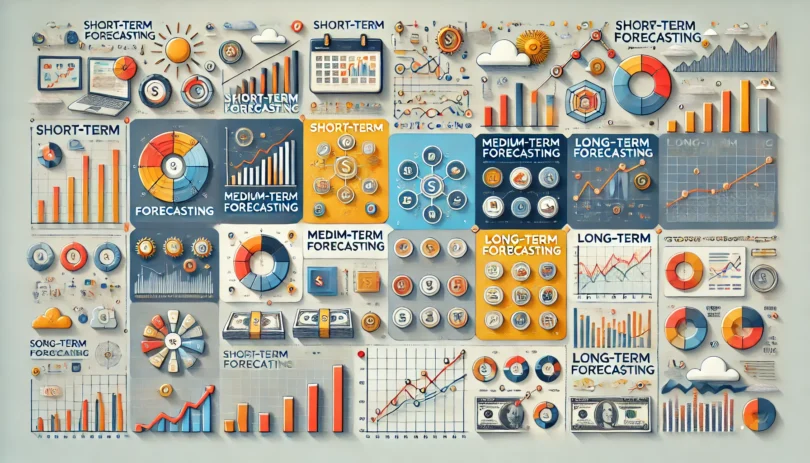Introduction
Cash flow forecasts vary based on their purpose, scope, and time horizon. Each type of forecast serves a unique role in addressing specific organizational needs, from managing day-to-day liquidity to supporting long-term strategic planning. This chapter delves into the different types of cash flow forecasts and their applications.
- Based on Time Horizon
1.1 Short-Term Forecasts
- Purpose: Address immediate cash needs, typically ranging from daily to monthly.
- Applications:
- Ensuring adequate bank balances.
- Managing payroll, supplier payments, and other operational expenses.
- Example: A retail chain preparing for daily cash register deposits.
1.2 Medium-Term Forecasts
- Purpose: Provide visibility over a few months, balancing operational and strategic objectives.
- Applications:
- Funding seasonal working capital needs.
- Planning for upcoming debt payments or capital expenditures.
- Example: A manufacturing company forecasting cash flows for a three-month production cycle.
1.3 Long-Term Forecasts
- Purpose: Align with broader organizational goals, covering periods exceeding six months to several years.
- Applications:
- Supporting strategic investments, acquisitions, or expansions.
- Managing long-term debt and capital allocation.
- Example: A technology firm projecting cash flows for a new product development lifecycle.
- Based on Purpose
2.1 Operational Forecasts
- Focus: Day-to-day liquidity management.
- Users: Treasury and operations teams.
- Example: Forecasting cash flows to avoid overdrafts or delays in payments.
2.2 Strategic Forecasts
- Focus: Aligning cash flows with organizational goals, such as growth initiatives.
- Users: Executive leadership and strategic planners.
- Example: Planning cash availability for entering a new market.
2.3 Contingency Forecasts
- Focus: Preparing for potential disruptions or unforeseen scenarios.
- Users: Risk management teams and financial planners.
- Example: Forecasting the impact of a significant economic downturn on liquidity.
Conclusion
Understanding the types of forecasts enables businesses to apply the appropriate approach for their specific needs, ensuring both short-term stability and long-term success.







Leave a Comment
You must be logged in to post a comment.